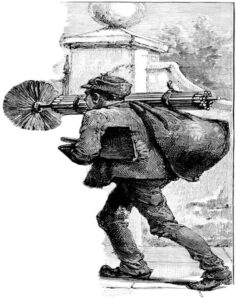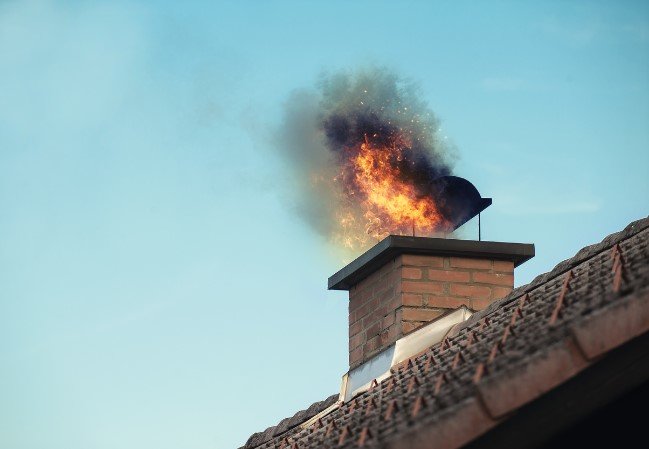
A Brief History of the Chimney Sweep and Modern Chimney Safety Practices
The chimney sweep profession remains crucial for ensuring the safe operation of fireplaces and heating systems.
In the whimsical world of “Mary Poppins,” Dick Van Dyke’s portrayal of Bert the chimney sweep paints a picture of luck and cheer. However, behind the catchy tunes and cheerful demeanor lies a history fraught with danger and hardship that has led to modern chimney safety practices, including requirements in the 2024 International Fuel Gas Code®.
The Grim Beginnings
Chimney sweeping was not a theatrical dance, but rather a dangerous job. Young boys, known as “Climbing Boys,” navigated chimney flues, battling not only soot and creosote, but also the danger of “chimney sweeps’ carcinoma.” It was a world of danger, where every climb held the threat of entrapment, and every descent risked a life-threatening fall.

Chimney Sweep Legislation and Regulation
The Chimney Sweepers Act of 1788 marked a turning point, outlawing the use of children under eight in chimney sweeping. This was only the beginning, as subsequent acts sought to raise the minimum age and protect the vulnerable apprentices from the dangers that lurked within the soot-laden chimneys.
Mandatory chimney cleaning ordinances became the cornerstone of fire prevention, ensuring that each chimney underwent regular cleansing to ward off the threat of combustible soot and creosote. The transition from timber to brick-and-mortar chimneys further fortified this defense, creating barriers against fire and decay.
Modern Chimney Safety Practices
Fast forward to the present day, where the legacy of chimney sweeping lives on in the pursuit of safety. Organizations like the Chimney Safety Institute of America (CSIA) stand as guardians of this legacy, advocating for annual chimney inspections and cleanings to protect against potential chimney fires. They emphasize that proactive maintenance helps protects against disaster by safeguarding homes and communities against potential fires.
See Related: From the Field: 7 Things Code Inspectors Wish Homeowners Knew
The 2024 International Fuel Gas Code® requires that chimney passages be clear of any blockages and flammable buildup, such as creosote. It mandates cleaning if the chimney has been used for a fireplace or any solid or liquid-fuel-burning device in the past. Before installing a new appliance or connecting a vent to a chimney that has been used for venting a solid or liquid fuel-burning device or fireplace, cleaning is also required (Sections 501.15.2 and 503.5.6).
Even with modern chimney safety practices, approximately 14,000 chimney and vent fires still occur annually in the United States, underscoring the importance of continued vigilance and education in chimney maintenance.

Importance of Building Safety Professionals
The chimney sweep profession remains crucial for ensuring the safe operation of fireplaces and heating systems. As advocated by the International Code Council and Chimney Safety Institute of America (CSIA), regular inspection and cleaning are paramount, especially for older wood stoves and fireplace inserts prone to increased creosote buildup. By embracing these practices, we honor the legacy of chimney sweeps while prioritizing fire safety in our communities.
Learn more about the Code Council’s PMG support and available resources here.








